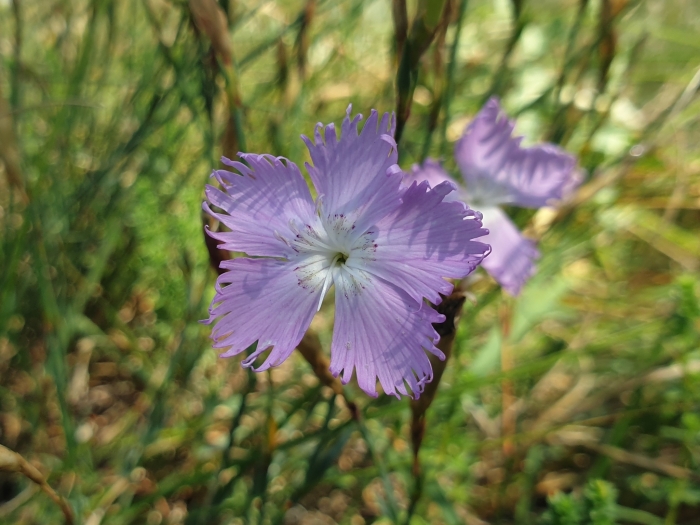Fringed Pink
(Dianthus gallicus)
Fringed Pink (Dianthus gallicus)
/
/

Clément Maouche
CC BY 4.0
Image By:
Clément Maouche
Recorded By:
Copyright:
CC BY 4.0
Copyright Notice:
Photo by: Clément Maouche | License Type: CC BY 4.0 | License URL: http://creativecommons.org/licenses/by/4.0/ | Rights Holder: Clément Maouche | Publisher: iNaturalist | Date Created: 2023-07-07T10:15:14Z |

























Estimated Native Range
Summary
Dianthus gallicus, commonly known as the fringed pink, is a perennial subshrub native to rocky and grassy habitats in Portugal, Spain, and France. It typically grows to a height of 35-59 inches and has a bushy habit with narrow, linear leaves that resemble ferns. The fringed pink blooms from July to November, producing showy white or pale lemon flowers with fringed edges, which are highly attractive to pollinators.
In cultivation, Dianthus gallicus is valued for its extended flowering period and its ability to thrive in poor, well-drained soils. It is often used in rock gardens, as a border plant, or in wildflower meadows where its height can add vertical interest. This species prefers full sun and can tolerate drought once established, making it a low-maintenance option for gardeners. While it is not commonly affected by diseases, root rot can occur in poorly drained soils. It is also available from commercial suppliers for ornamental use, and its cut flowers are sometimes used in floral arrangements.CC BY-SA 4.0
In cultivation, Dianthus gallicus is valued for its extended flowering period and its ability to thrive in poor, well-drained soils. It is often used in rock gardens, as a border plant, or in wildflower meadows where its height can add vertical interest. This species prefers full sun and can tolerate drought once established, making it a low-maintenance option for gardeners. While it is not commonly affected by diseases, root rot can occur in poorly drained soils. It is also available from commercial suppliers for ornamental use, and its cut flowers are sometimes used in floral arrangements.CC BY-SA 4.0
Plant Description
- Plant Type: Shrub, Herb
- Height: 0.5-1.5 feet
- Width: 0.5-1 feet
- Growth Rate: Moderate
- Flower Color: Pink
- Flowering Season: Summer
- Leaf Retention: Deciduous
Growth Requirements
- Sun: Full Sun
- Water: Low
- Drainage: Fast
Common Uses
Border Plant, Butterfly Garden, Drought Tolerant, Groundcover, Low Maintenance, Rock Garden, Showy Flowers
Natural Habitat
native to rocky and grassy habitats in Portugal, Spain, and France
Other Names
Common Names: French Pink, Gallic Carnation
Scientific Names: , Dianthus gallicus, Dianthus arenarius, Dianthus arenarius var. gallicus, Dianthus flaviobrigensis, Dianthus hyssopifolius subsp. gallicus, Dianthus monspeliacus subsp. gallicus, Dianthus monspessulanus subsp. correvonii, Dianthus monspessulanus var. albidus, Dianthus monspessulanus var. barbatus
GBIF Accepted Name: